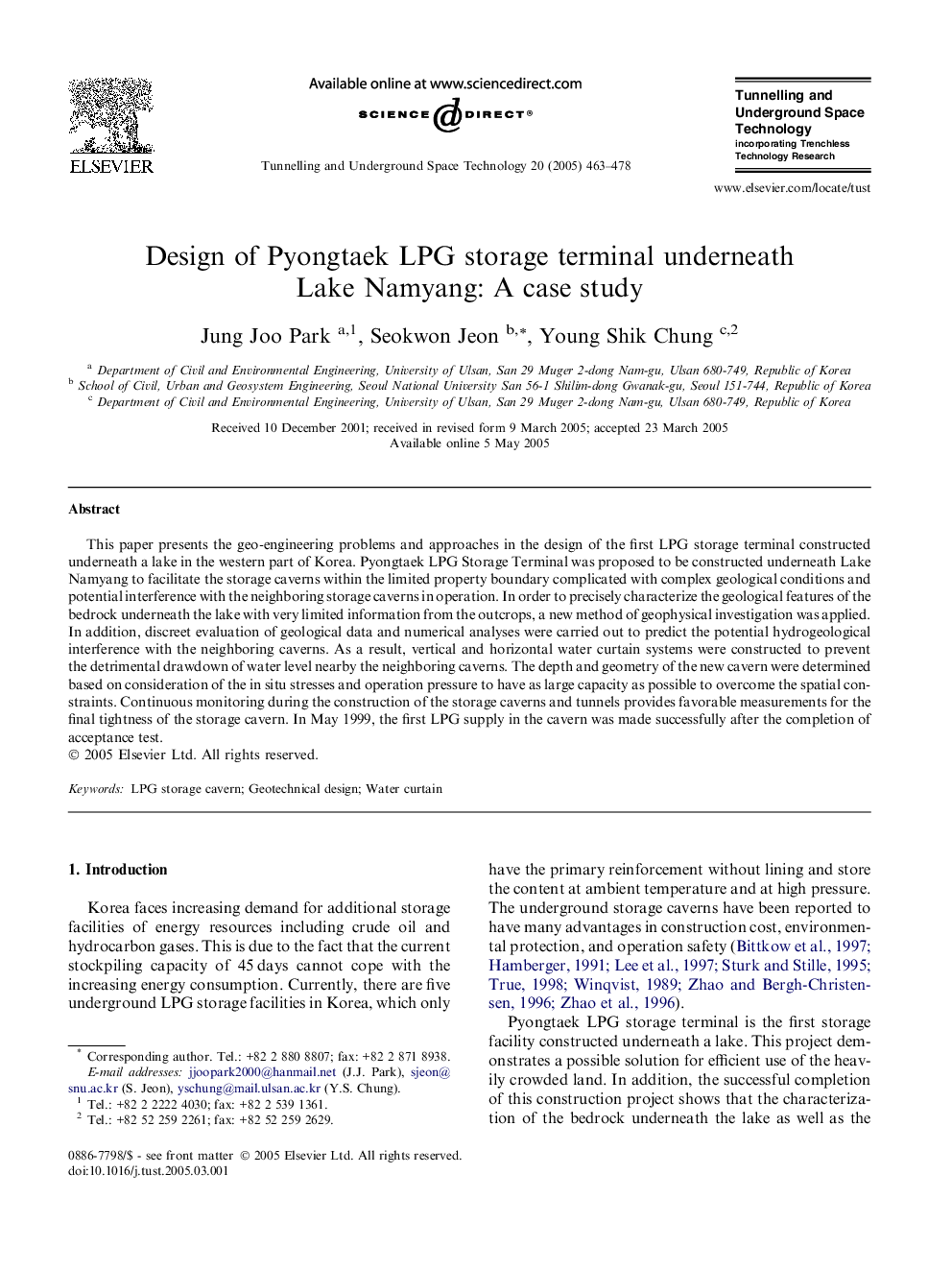| Article ID | Journal | Published Year | Pages | File Type |
|---|---|---|---|---|
| 10296506 | Tunnelling and Underground Space Technology | 2005 | 16 Pages |
Abstract
This paper presents the geo-engineering problems and approaches in the design of the first LPG storage terminal constructed underneath a lake in the western part of Korea. Pyongtaek LPG Storage Terminal was proposed to be constructed underneath Lake Namyang to facilitate the storage caverns within the limited property boundary complicated with complex geological conditions and potential interference with the neighboring storage caverns in operation. In order to precisely characterize the geological features of the bedrock underneath the lake with very limited information from the outcrops, a new method of geophysical investigation was applied. In addition, discreet evaluation of geological data and numerical analyses were carried out to predict the potential hydrogeological interference with the neighboring caverns. As a result, vertical and horizontal water curtain systems were constructed to prevent the detrimental drawdown of water level nearby the neighboring caverns. The depth and geometry of the new cavern were determined based on consideration of the in situ stresses and operation pressure to have as large capacity as possible to overcome the spatial constraints. Continuous monitoring during the construction of the storage caverns and tunnels provides favorable measurements for the final tightness of the storage cavern. In May 1999, the first LPG supply in the cavern was made successfully after the completion of acceptance test.
Keywords
Related Topics
Physical Sciences and Engineering
Earth and Planetary Sciences
Geotechnical Engineering and Engineering Geology
Authors
Jung Joo Park, Seokwon Jeon, Young Shik Chung,
